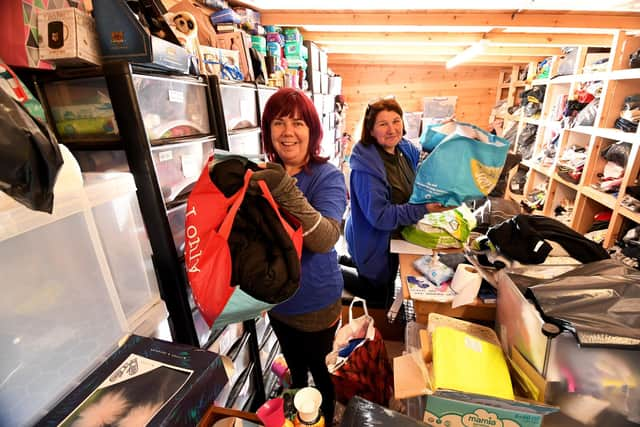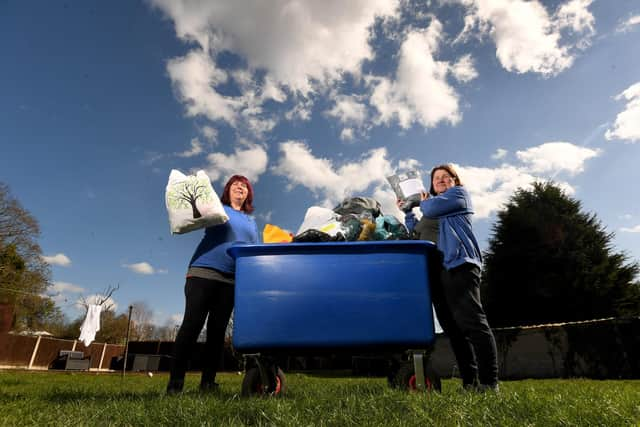'We shouldn't be needed' - How Yorkshire-based clothing bank is helping people struggling to afford to clothe themselves
Demand has risen since its launch in January 2020. In its first year, it distributed more than 1,000 parcels, against the backdrop of the Covid-19 pandemic; this year to date, it has received requests for over 1,500. Co-founder Sally Parkinson believes the need will keep on growing.
"It might be [greater] awareness [of The Clothing Bank], she reflects. “But I think everybody has been affected by the crisis at the moment. Prices of everything are going up. People just haven’t got the money to clothe themselves. It’s always been a problem but I don’t think people were necessarily aware of it. In your really deprived areas, there’s kids going about with no underwear or ill-fitting clothes and it shouldn’t be like that.” She continues: “We shouldn't be needed and the outcome for us would be that we wouldn’t be providing this service but I can only see things getting worse.”
Advertisement
Hide AdAdvertisement
Hide AdSally and co-founder Susan Bell set up The Clothing Bank in a passageway down the side of Susan’s home in a village close to Knottingley on the border of North and West Yorkshire. They say they recognised there was a “gap in the support chain” for people who were struggling to clothe themselves or their family members after paying for everyday living costs such as energy bills, food and childcare. "Clothing is one of the things people sacrifice,” explains Sally, who has worked as a cake maker and childminder. “When it comes to it, it’s food and heating over clothes.”


She reflects back on a time when both she and her husband were working but “didn’t fit in anywhere to get help”, always earning just over any thresholds for support. “But we still needed that help.” She adds: “Nurses have come to us with only their uniform to wear…You don’t know the hardships people are facing, the bills they pay, how stretched their budgets are.”
After setting up a Facebook page appealing for donations, the alleyway soon filled up and requests for help came in. They moved to a carport to store more clothes, and set about fundraising for even more space. With the help of National Lottery cash and community donations, they launched The Clothing Bank cabin in December 2020 and are planning another outbuilding to provide greater capacity – and sort more stock for those who need it.
Along the way, they’ve been supported by what they now call The Clothing Bank community. More than 50,000 people are actively raising awareness of the organisation’s existence, donating clothes, or acting as volunteer drop off points in Yorkshire. A number of local firms are also sponsoring their efforts. The support has enabled the women to supply clothing, underwear and shoes to people across not just this region, but increasingly, the whole country.
Advertisement
Hide AdAdvertisement
Hide Ad“We’ve had a strong community following that’s what it’s about,” Sally says. “It’s not about me and Susan, it's about community coming together and helping others...You’ve people on all scales that need the help from babies and families to veterans who have been homeless and are starting off in houses with only the clothes they’re wearing.”


The 100-plus volunteers who run drop-off points are “the backbone of The Clothing Bank”, Sally says, collating good quality donations – secondhand or new – from people in their communities and then taking them over to the organisation’s main base in Brotherton to be sorted, packaged and distributed. Sam Rider Scothorn is among them and has been collecting clothes in her garage in Barnsley for 18 months, taking around 30 bags of donations over to Brotherton every week. “It’s going to families in need,” says Sam, a childminder. “Some families can’t even afford charity shop prices anymore. My husband and I are quite lucky, we’re comfortable and our boys have grown up. But when they were younger and we were both working, we were struggling to get help - just being a few pounds over a threshold meant we couldn’t get anything and that put us at a deficit.
"It’s nice knowing now that this is helping families like us when we were in that situation, those who are working but can’t get help, it’s there for them...These items aren’t going to landfill…they’re helping those that need it. [Clothing] is one less problem for families - they can then go and put food on the table or pay their extortionate gas or electric bill.”
The majority of people helped by The Clothing Bank are in work, Sally says – and they don’t need to be referred by an organisation. People typically request help, in confidence, by message or email and each case is handled by Sally or Susan. The thanks the organisation receives show just how much it is valued. In one anonymised message, for example, a parent and daughter say they “cried knowing we can now be warm”. Another reads: “Not only do my children have clothes that fit, they have nice and smart clothes to wear. We are all so grateful.”
Advertisement
Hide AdAdvertisement
Hide AdWith demand high, Sally hopes this year that The Clothing Bank can get retailers on board with its efforts, making use of surplus stock. She also wants to work more closely with schools, championing community spirit and raising awareness of clothing poverty, whilst encouraging people not to be ashamed to ask for help. Afterall, she says, the impact of clothing is huge - and not just in a practical sense. “Clothing helps mental health, it helps confidence, it helps people to progress...One universal truth seems to be an increase in confidence and self-esteem, taking weight off people’s shoulders and allowing them to blend into society without potential prejudice.”
- theclothingbank.org.uk
